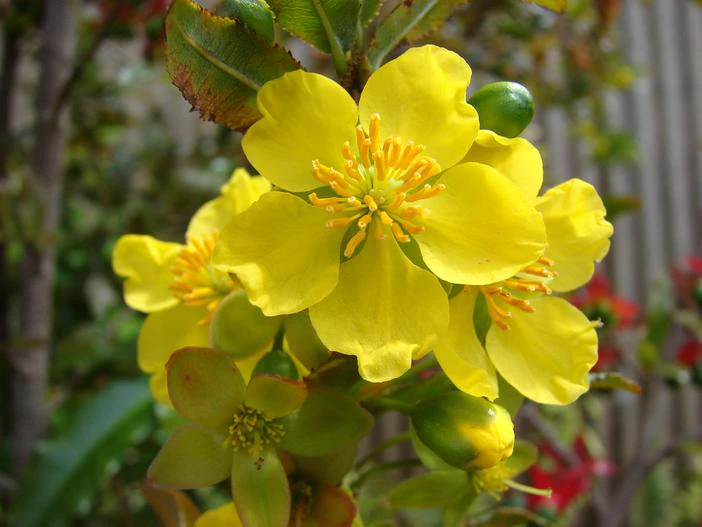Mickey Mouse Plant
(Ochna serrulata)
Mickey Mouse Plant (Ochna serrulata)
/
/

Forest and Kim Starr
CC BY 2.0
Image By:
Forest and Kim Starr
Recorded By:
Copyright:
CC BY 2.0
Copyright Notice:
Photo by: Forest and Kim Starr | License Type: CC BY 2.0 | License URL: https://creativecommons.org/licenses/by/2.0/ | Uploader: Starr Environmental | Publisher: Flickr












































































Estimated Native Range
Climate Requirements for Valencia, Spain
| This Plant | Your Site | Plant Suitability for Your Location | ||
|---|---|---|---|---|
| • Precipitation | 12" - 162" | 18" | Your precipitation may be insufficient for this plant. Irrigate N" / year. | Irrigate N" / year |
| • High Temp. | 64°F - 98°F | 86°F | Your summer temperatures are normal for this plant. | Excellent |
| • Low Temp. | -4°F - 73°F | 44°F | Your winter temperatures are normal for this plant | Excellent |
This plant should grow well at your location with about N inches per year (Y minutes per month) of irrigation.
Summary
Ochna serrulata, commonly known as Mickey Mouse Plant, is a small, evergreen shrub native to the open woodlands and grasslands of South Africa. It is characterized by its distinctive fruit that, when inverted, resembles the ears of Mickey Mouse, and bright-red sepals that resemble trousers. This plant typically grows between 1 and 2 meters (3.3 and 6.6 feet) in height but can occasionally become a small tree up to 6 meters (20 feet) tall. The narrow, oblong to elliptic leaves measure 30–60 mm (1.2–2.4 inches) in length by 8–15 mm (3⁄8–5⁄8 inches) wide, and are shiny green with fine toothed serrations along the edges. In spring, the shrub produces fragrant yellow flowers about 2 cm (0.79 inches) in diameter, though the yellow petals tend to drop shortly after blooming. Despite this, the flowers are showy and attract bees and butterflies, while birds are drawn to the fruitlets.
Ochna serrulata is valued for its ornamental appearance, particularly the striking contrast between its black fruit and red sepals. It is used in South African gardens for its hardiness and resilience, providing a good source of food for birds. The plant thrives in both sunny and shady conditions and prefers well-drained soil. It is initially slow-growing, but once established, it grows more rapidly, especially with frequent watering. While it is a good choice for attracting wildlife, it is potentially invasive outside its native range, so gardeners should check local regulations before planting.CC BY-SA 4.0
Ochna serrulata is valued for its ornamental appearance, particularly the striking contrast between its black fruit and red sepals. It is used in South African gardens for its hardiness and resilience, providing a good source of food for birds. The plant thrives in both sunny and shady conditions and prefers well-drained soil. It is initially slow-growing, but once established, it grows more rapidly, especially with frequent watering. While it is a good choice for attracting wildlife, it is potentially invasive outside its native range, so gardeners should check local regulations before planting.CC BY-SA 4.0
Plant Description
- Plant Type: Shrub
- Height: 4-8 feet
- Width: 3-4 feet
- Growth Rate: Moderate
- Flower Color: Red, Yellow
- Flowering Season: Spring, Summer
- Leaf Retention: Evergreen
Growth Requirements
- Sun: Full Sun, Part Shade
- Water: Medium
- Drainage: Medium
Common Uses
Bird Garden, Low Maintenance
Natural Habitat
Native to the open woodlands and grasslands of South Africa
Other Names
Common Names: Mickey Mouse-Plant , Small-Leaved Plane , Mickey Mouse Bush , Carnival Ochna , Bird’s Eye Bush , Mussepiggbuske , Small-Leaved Plane
Scientific Names: Ochna serrulata , Diporidium serrulatum , Ochna atropurpurea , Ochna multiflora
GBIF Accepted Name: Ochna serrulata (Hochst.) Walp.